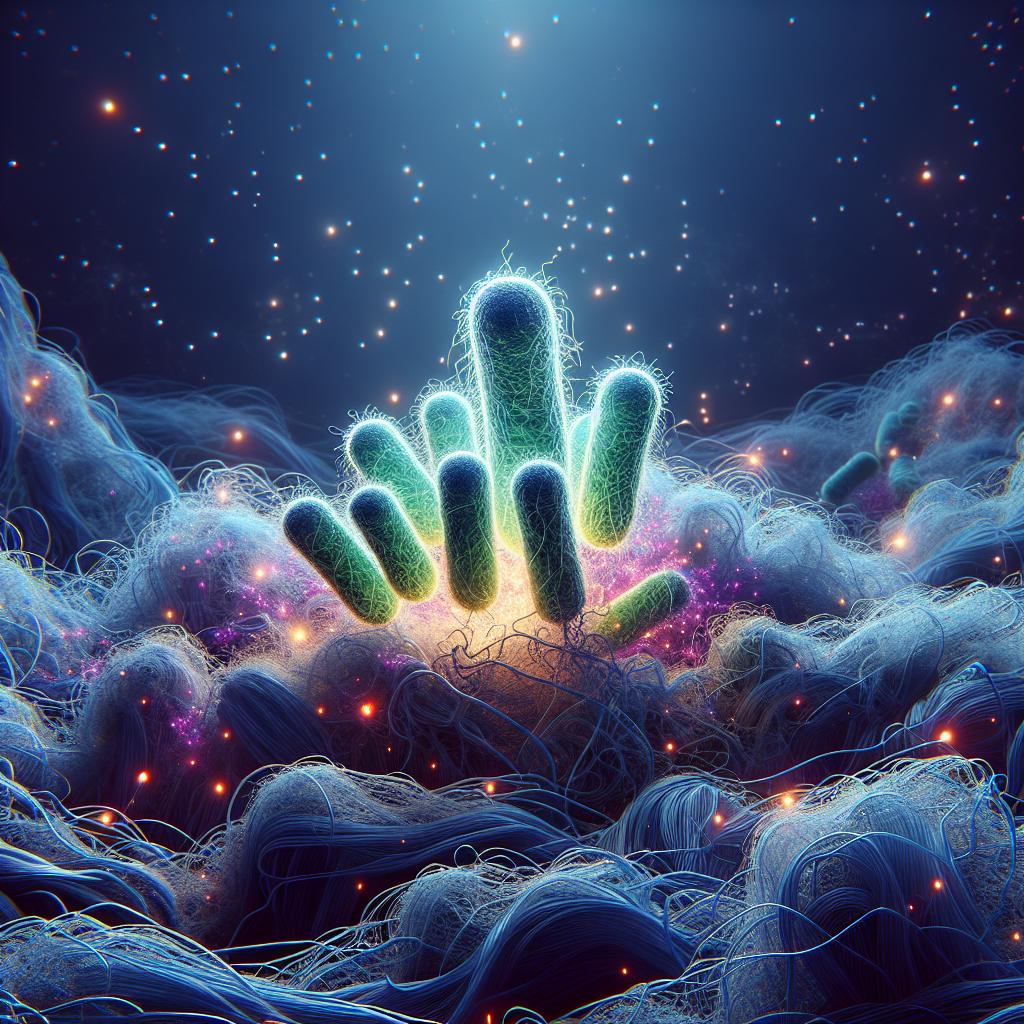
Divine Adaptation: How Bacteria Miraculously Feed on Nylon Waste
Published: 13 April 2024
The Adaptation of Bacteria to Feeding on Nylon Waste
In 1975, Japanese scientists made a remarkable discovery - bacteria that could survive on nylon waste as their sole source of carbon and nitrogen. This finding led to extensive research to understand the mechanism behind these bacteria's unique ability. The bacteria identified were Flavobacterium sp. K172 and Pseudomonas sp. NK87, both capable of breaking down nylon compounds.
The Enzymes Involved
To understand how these bacteria adapted to feed on nylon waste, researchers investigated the enzymes responsible for this degradation. In Flavobacterium K172, three enzymes were identified: F-EI, F-EII, and F-EIII. Pseudomonas NK87 had two enzymes: P-EI and P-EII. Interestingly, none of these enzymes showed any catalytic activity towards naturally occurring amide compounds, indicating that they were novel enzymes rather than modified existing ones. Furthermore, no similarity was found between these enzymes and known enzymes.
These enzymes are located on plasmids, which are circular DNA molecules separate from the bacterial chromosome. Flavobacterium carries the genes on plasmid pOAD2, while Pseudomonas has them on plasmids pNAD2 and pNAD6.
Challenges to the Evolutionary Explanation
Apologists for evolution have often cited these findings as an example of new information arising through random mutations and natural selection. However, several factors cast doubt on this explanation:
-
Transposable Elements: The presence of five identical transposable elements on the pOAD2 plasmid suggests an adaptive design when the bacterium is under stress. If random mutations generated the three catalytic genes without altering the transposable elements, it would be highly improbable. Additionally, all three nylon-degrading genes appear exclusively on plasmids in both Flavobacterium and Pseudomonas.
-
Lack of Stop Codons: The antisense DNA strand of the nylon genes investigated in Flavobacterium and Pseudomonas lacks any stop codons, a highly unlikely occurrence by chance. This absence of stop codons across all four antisense sequences is estimated to have a probability of 1 in 10^12. The lack of phylogenetic relationship between the EII genes in Pseudomonas further suggests that the absence of stop codons cannot be attributed to common ancestry.
-
Recombination and Protection: It appears that recombination of codons has occurred between start and stop codons within each sequence, protecting the antisense strand from generating stop codons. The mechanism for this recombination is unknown, but it likely involves the transposase genes. This finding contradicts the claim that a functional gene arose from a random frame shift mutation.
-
Laboratory Adaptation: Researchers demonstrated that Pseudomonas aeruginosa could acquire nylon-degrading ability in just nine days in laboratory cultures. This rapid adaptation suggests the existence of a special mechanism, rather than random mutations and selection, as previously proposed.
- New Gene Family: The researchers could not identify any ancestral gene for the nylon-degrading genes. These genes represent a new gene family, making gene duplications an unlikely source for their origin.
Plasmids as Adaptive Elements
Pseudomonas aeruginosa is known for its ability to adapt to various food sources using plasmids such as TOL, NAH, CAM, SAL, and OCT. These plasmids carry the necessary genes for adaptation and are separate from the bacterial chromosome. P. aeruginosa has maintained its identity over many generations without evolving into a different bacterium, despite having ample opportunities for genetic change.
The large size of P. aeruginosa's chromosome (6.3 million base pairs) means that only a limited mutation rate can be tolerated without causing error catastrophe. Moreover, mutations in the chromosome alone cannot generate a new enzyme within such a short timeframe as observed in laboratory cultures. Plasmids, on the other hand, appear to be designed elements that facilitate adaptation while preserving the integrity of the main chromosome.
Implications and Future Research
The evidence presented raises doubts about the idea that these bacteria's adaptation to nylon waste occurred through random mutations and natural selection. Instead, it suggests the existence of a sophisticated, irreducibly complex molecular system involved in plasmid-based adaptation. Further research is needed to fully understand this system and its potential applications in disease control.
This topic is significant because it challenges the evolutionary paradigm and highlights the intricate design present in bacterial adaptation. It also encourages us to think about the limitations of chance mutations as an explanation for the complexity we observe in biological systems.
Why This Matters
Understanding how bacteria adapt to new environments has implications for disease control and antibiotic resistance. By unraveling the mechanisms behind plasmid-based adaptation, scientists may discover ways to prevent the development of plasmid-mediated resistance in pathogenic microbes.
Think About It
Consider the complexity involved in bacterial adaptation to new food sources. How does this challenge the idea that such adaptations can arise solely through random mutations and natural selection? If chance mutations are insufficient to explain these adaptations, what does this imply about the origin and diversity of life?
